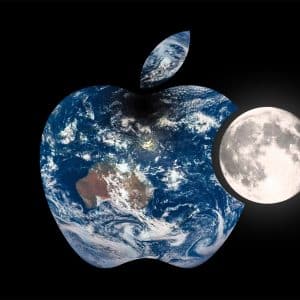Apple is a company that prides itself on how environmentally friendly it is and because of this, it’s constantly working toward reducing it’s carbon footprint. Now, according to this year’s Environmental Responsibility Report, the company is focusing on climate change, resources, and the use of safer materials.
Perhaps the most impressive thing is that Apple now runs all of its operations on 100% renewable energy. The report states:
We proved that 100 percent renewable is 100 percent doable. All our facilities worldwide—including Apple offices, retail stores, and data centers—are now powered entirely by clean energy. But this is just the beginning of how we’re reducing greenhouse gas emissions that contribute to climate change. We‘re continuing to go further than most companies in measuring our carbon footprint, including manufacturing and product use. And we’re making great progress in those areas too.
The company is now using a combination of renewable energy sources including both solar and wind in an effort to dramatically reduce its carbon footprint. Apple claims that approximately 66% of the renewable energy it produces comes from projects that they created themselves.
The report also talks about what Apple will continue to do in the future to maintain its renewable energy efforts:
Beyond 2018, we will continue to innovate to expand our use of renewable energy as our electricity needs grow. We’ll continue to explore new markets and invest in energy storage—an essential element in our transition to renewable energy.
This will extend to products that Apple sells to customers. We already know that the latest generation MacBook Pros use 61% less energy than the previous generation. Plus, Apple’s HomePod consumes less power, even when it’s playing music, than one LED lightbulb. The boxes that devices are stored in have also been taken into account:
We include all the energy used for shipping and recycling in our carbon footprint. So we strive to make our packaging smaller or lighter so less fuel is consumed when we transport products by air and sea. We’re also adjusting our recycling practices. When collecting end-of-life products, we maximize the environmental benefits of recycling by weighing the availability of recovery technology with the impacts of shipping materials.
The company hopes to make their supply chain more environmentally friendly, and to ensure that all Apple products are built for durability and recyclability. In keeping with this, Apple has announced its new iPhone disassembly bot Daisy who is more efficient than it’s predecessor.
If you’re interested to find out more, you can read Apple’s full Environmental Responsibility Report here.








